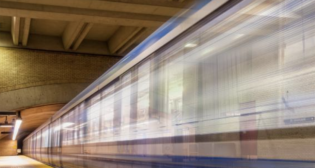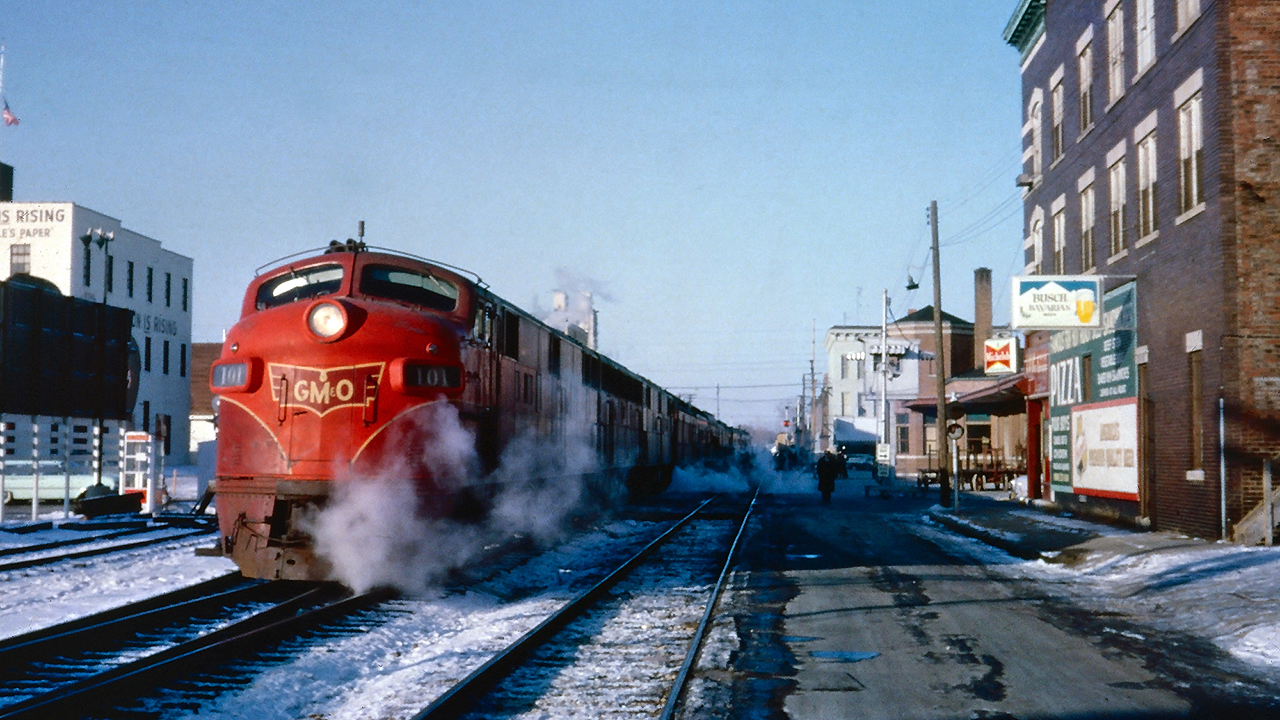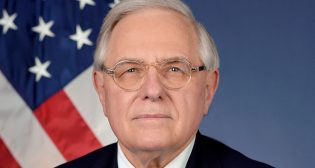
Chicago-St. Louis: Missing Ingredients
Written by M. E. Singer
Gulf, Mobile & Ohio E7A #101 with train #3, the southbound Abraham Lincoln, at Springfield, Ill., circa 1964. American-Rails.com collection.
How long will the State of Illinois pretend that it has built true HSR (high-speed rail) by naming what is actually higher-speed rail (HrSR)* “Illinois High Speed Rail”?
When you allow state politicians, bureaucrats and their consultants to run the show, all you get after almost 20 years and approximately $2 billion is a 15-minute reduction in Amtrak’s current Chicago-St. Louis corridor schedule time. Regrettably, federal politicians and bureaucrats have been consistently oblivious regarding Illinois, just as they were after the promise in 2000 how the new Acela would cut running time between New York and Boston—but only marginally improved its schedule, despite eliminating the change in New Haven between electric and diesel locomotives.
Indeed, just like the lack of any significant time difference for Acela, reviewing the new end-point Lincoln Service schedules identifies that only three out of the eight trains on the Chicago-St. Louis corridor operate “under five hours”—by just 14 minutes southbound and five minutes northbound. Interestingly, the January 1964 Official Railway Guide identified the fastest train on this ex-Gulf, Mobile & Ohio route, the Abraham Lincoln, running in five hours, ten minutes in both directions on jointed rail with numerous grade crossings, without PTC. How does such a fact truly question how much progress has been achieved in nearly 60 years at a $2 billion cost?
State bureaucrats elected to significantly increase running time by diverting trains off Union Pacific onto Norfolk Southern at Springfield, Ill., to serve a new depot in an urban renewal effort. That the depot is no longer conveniently located on the ex-GM&O line through downtown Springfield, offering a quick walk to the central business district, is glossed over. Instead, Illinois spent millions to initially repair the current Springfield depot on 3rd Street, then spent about $135 million for an urban renewal depot project on 10th Street. For reasons unknown, the state elected to ignore how UP resolved in 2006 a similar issue in downtown Reno, Nev., by dropping the tracks for passenger/freight into a trench, which eliminated multiple grade crossings.
More important, whatever happened to the state’s plan for Amtrak’s Lincoln Service to be re-routed off the currently congested CN route between Chicago Union Station and Joliet to eliminate delays? The first flyover was to take the HSR from its exit at Chicago Union Station to Metra’s Rock Island District (coming out of the parallel LaSalle Street Station) down the Metra line to before Joliet where another flyover was planned to direct the HSR onto the UP route (ex-GM&O) to St. Louis. Also unanswered is a major issue: How safely can this Amtrak service run fast over numerous angled grade crossings on a suburban line through many communities?
A significant point ignored by state and federal politicians, and apparently oblivious to state bureaucrats, is to even acknowledge how the key missing ingredient remains the lack of train frequency, despite the higher speeds and improved infrastructure. Making such an infrastructure investment by any state/federal agency to merely increase speed will never pay off if held to the same minimal current schedule as afforded by the state. Instead, this route should have, as Amtrak practices in the Northeast Corridor, frequent service not dependent upon limited state funding.
Also missing is building volume by operating run-through schedules from Chicago suburbs to St. Louis, and among Midwest corridors, to eliminate changing trains in Chicago. Actually, these beneficial concepts were proven viable in the early 1970s by an eager team of Amtrak management led by Kevin McKinney and the late Jim McClellan, who initiated run-through Milwaukee-St. Louis service via Chicago. Suburban stops such as Glenview, Ill. significantly contributed toward business development in central Illinois.
Today, the challenge is how to get state DOTs to think out of the box to support multi-state corridors—even partial service among corridors (e.g., Normal, Ill.-Ann Arbor, Mich.) Are California and North Carolina the only states to understand the correlation of frequencies and regional corridors to build volume?

M. E. Singer is an observer and commentator on the passenger rail industry, identifying shortfalls and growth opportunities. He is currently Principal at Marketing Rail Ltd. in Chicago, a consultancy to achieve passenger rail customer experience and product branding. Singer has prior corporate experience in turnaround operations management, marketing, and mergers and acquisitions in the health care field.
*Editor’s Note: Railway Age defines “true” high-speed rail (HSR) as passenger train operating speeds of greater than 110 mph (typically in the +/–200-mph range) on a dedicated right-of-way with FRA Class 7, 8 or 9 track that does not host shared operations with freight or regional/commuter trains. We define operations at speeds ranging from 90 to 110 mph as “higher speed rail” (HrSR) or “high performance rail” (HPR), on mixed-use right-of-way. In this respect, Illinois High Speed Rail and the Northeast Corridor are HrSR, not HSR, even though Acela trains on the NEC operate at speeds on some segments up to 135 mph between New York City and Washington D.C. under an FRA waiver, and up to 150 mph for a very short section in New England. When the new Acela II enters service next year, it will attain speeds up to 160 mph in limited areas. Our definitions are aligned with FRA’s Track Safety Standards, found at 49 CFR Part 213 , which establish track structure and geometry requirements for nine track classes (Sec. 213.9 and Sec. 213.307) with maximum speeds designated for each class. Railroads indicate the class to which each track belongs. – William C. Vantuono



